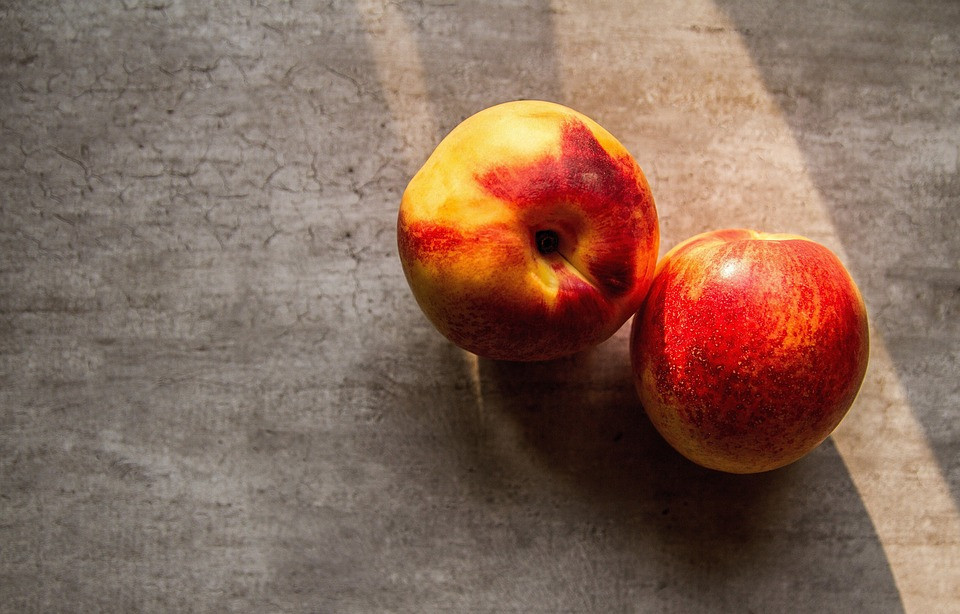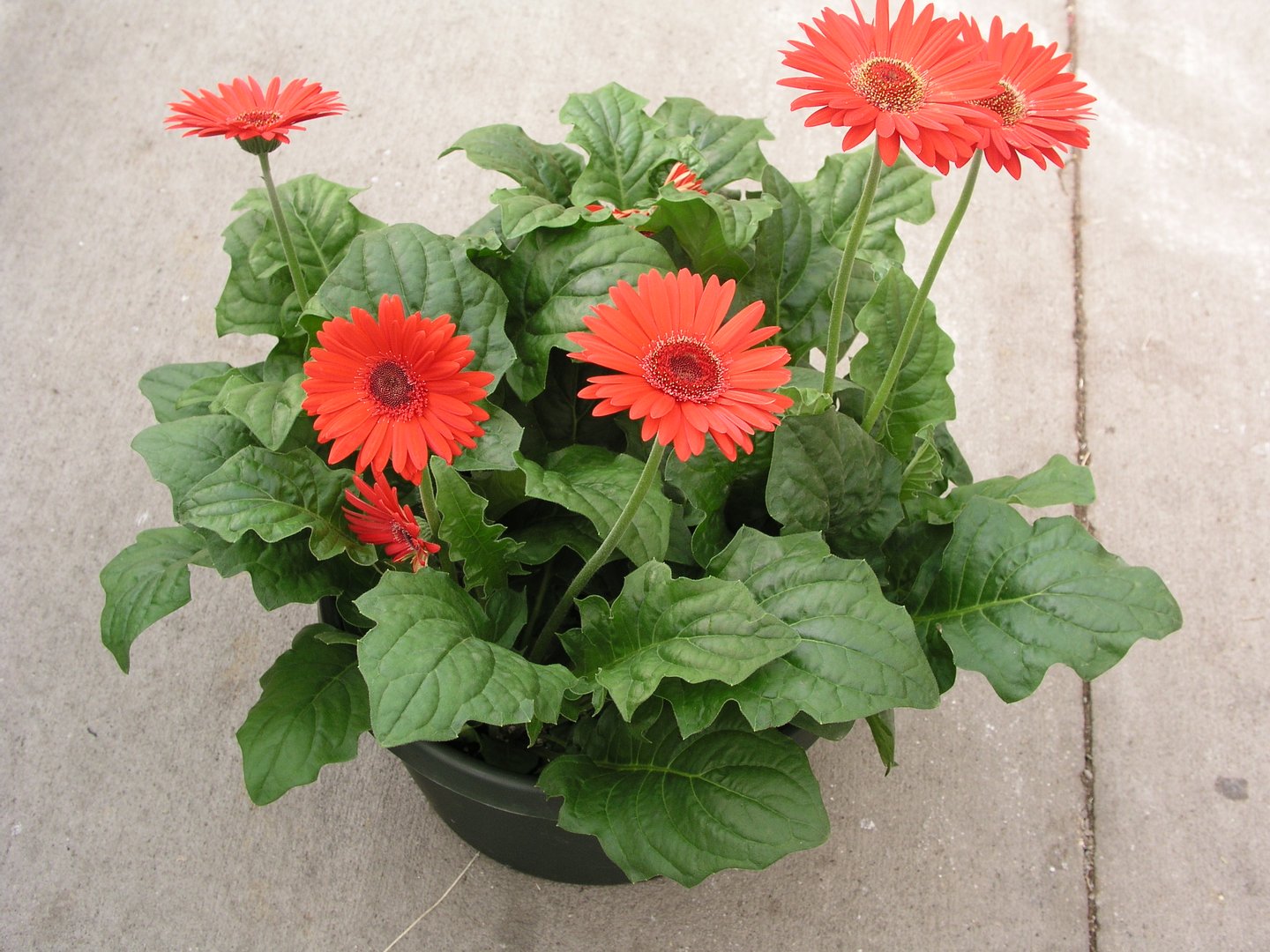What do the two stone fruits have in common and where do they differ?
Patricia Jordan
Whilst biting into a nectarine during the late summer and mopping up the juice that was running down my arm, I wondered why I preferred them to peaches. The skins are the first difference of course and whilst nectarines usually have a glossy hard skin, peaches have a furry skin and I think that is what I don’t like about them.
When I was a child, Sunday tea at home was always followed by tinned peaches and cream and I don’t think I knew then that nectarines were around! It was something of a surprise to learn later that they originated in China over 2000 years ago, being it was thought, a natural mutation of a peach, although more recent research is beginning to doubt that. The gene that was different between the fruits makes the nectarine a little sweeter and of course the difference in the skin. Some say that white peaches and nectarines are sweeter than their yellow counterparts, but I have found that not to be the case and I am put off by the whiteness of the flesh, whereas the bright yellow insides of a nectarine remind me so much of sunshine.
Peaches too, probably originated in China over 2000 years ago as well, probably before nectarines and were carried eastwards by travellers and later cultivated in ancient Persia, Greece and Rome. European gardeners thought they came originally from Persia, hence their botanical names – Prunus persica along with Prunus persica var. nectarine. They were grown in Great Britain in the late 16th or early 17th centuries, and eventually were introduced to America by the Spanish. The first time the term ‘Nectarine’ was recorded in England was by Richard Parkinson in 1629, whilst he was botanist to King Charles I. He is known for his epic ‘Paradisus Terrestris’ where amongst the thousands of plants he praised was this lovely fruit. Even though the word ‘nectarine’ was first used in England in 1616, there is no conclusive evidence that the usage of the word derived from the Greek word meaning nectar, which refers to the sugary fluid secreted by the plant.
Peach fruits are often described as being freestone or clingstone, which just means that some come away easily from the nut, whilst others tend to cling. The kernel inside the hard outer case should not be eaten, even though it looks rather like a flattened almond, as it contains cyanide!
The huge rose family, with over 2500 species, contains many other prunus fruits as well as peaches and nectarines; cherries and almonds for example, and are all known as important stone fruit. They all need a cool winter period allowing the tree to lie dormant during the winter – something between 500 and 1000 chill hours, which is why they tend to grow at higher elevations than in the coastal regions. If they do not have this period in the winter then they may not flower, resulting in no fruits at all.
Here in Cyprus there around five different varieties of peach and eight varieties of nectarines available, so lots to choose from if you live in an ideal place in which to grow them!
WHAT TO DO IN THE GARDEN THIS MONTH
I always consider that October is the start of the Cyprus gardening year for me as well as many for other serious gardeners. After the heat of the summer, a lowering of temperatures and that welcome rain mid-September, the time is right to get out in the garden again. Removal of dead or dying plants is a priority, as is digging over the soil in your veggie patch and flower beds and adding in some compost, homemade or bought. Depending where you live, the soil in your garden may be sandy and fine, so it will need some humus to bulk it all up, in order to sustain the plants you have earmarked for this next phase of gardening. In other areas it may be very lumpy and difficult to work and digging in some grit or humus again should help things along. Don’t attempt to plant trees and shrubs until the earth is really damp or they will not prosper. Select them whilst the garden centres have a good choice, but be patient for a little while longer to set them in their eventual spots.
The same advice goes for Dutch bulbs, which should be on sale now. They cannot make roots in dry soil, so prepare the areas for planting, even watering the patch or pots if there is no rain where you are and when you judge the time right in your garden, but keep them dry until you plant them around 8cm deep. Tulips are always the last bulbs to flower, so they don’t mind hanging around and they can even be planted in late December and still flower in the spring. If we have a good winter’s rain this time round, then you may find that bulbs that didn’t emerge last year because of the lack of good deep rain may just do so this year.
Hedges and topiaries will have put on growth despite the heat, although not as fast as in the autumn-spring period. Nevertheless, they may need a trim. Topiary trees can quickly go out of shape and are expensive to buy, so keep an eye on them. Cloud-pruned old olive trees are attractive and popular, but make sure that you buy them from a reputable source. One of my favourite bushes has just flowered again for the second or third time this year. Leucophyllum frutescens or the ‘Texas Ranger’ is a shrub or small tree that reacts to high humidity or rainfall, when the pretty pink flowers burst into bloom, driving the local bees into a feeding frenzy. Other bushes that have withstood the summer heat are carissa, plumbago and hibiscus. My husband has been on guard on the Hibiscus rosa sinensis hedge in our garden, checking it every day for mealy bugs. He swears by the finger and thumb method of squashing them to keep the bushes clear. At one time it seemed as if the island was mealy-bug infested, but I haven’t had any reports of that this year. Perhaps the intense heat killed them off.
There are all manner of goodies on the garden centre benches just waiting for you to choose your favourites. Short-day plants like pot mums are there, along with zinnias and gerberas (see Plant of the Month) with their lovely colours to brighten up the flowerbeds, although I have had more success with the latter grown in pots.
If you like to grow flowers from seeds, you can sow some seeds now that it is cooler. I am always a little wary about sowing at this time of year, as the resulting seedlings have to survive the winter, which where I live can be quite cold sometimes. So my advice is to only sow half a packet and keep the rest until the spring. I keep seed packets in the fridge until I am just about to sow them, giving them a ‘sort of winter’, which they would get out of doors anyway. Annual flower seeds are sown straight into the ground, so leave them until spring or they may just rot off in the (hopefully) coming wet months. Even after all the heat we have had this summer, I notice many of the seeds of my spring and summer flowers have germinated on their own, without any help from me.
Plant of the Month – Gerbera
Gerberas, such colourful daisy-like plants, are more often than not grown here in pots. Natives of South Africa, but much-admired plants all over the world these days, they bloom profusely throughout the summer. The large flower heads have ray-like petals showing that they are part of the Asteraceae family. Some may have single or others double flowers whilst the leaves are coarse and often toothed.
Gerbera daisies can reach from 20 to 60cm tall and the flower heads grow from 4 to 12cm across. They can be grown both indoors and outdoors and are commonly used as cut flowers, although the stems often have to be supported with wires as the heavy heads can cause them to bend. The gerbera daisy is a popular house plant due to its bright and beautiful colouring. To grow them indoors, you’ll need a delicate balance of sunlight and moderate temperatures, so not in a spot on a windowsill, which may be too hot, ending up with scorched leaves. Gerberas can tolerate bright light in the morning and shade in the afternoon or moderate sunlight all day.
Watering is important but only do so when the top of the soil feels dry, and rather like poinsettia plants, let the pot drain before replacing it in its decorative outer pot and keep the water away from the leaves. The plant can be fed with something like Phostrogen in the spring and summertime.









Click here to change your cookie preferences